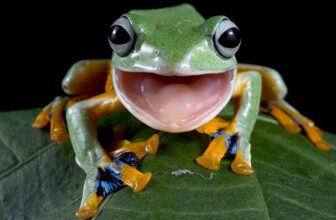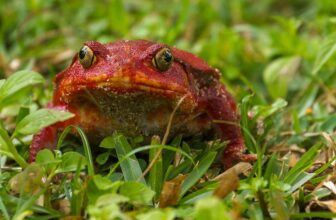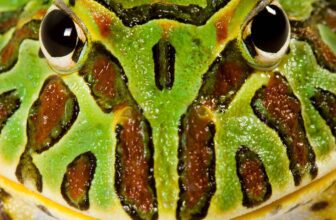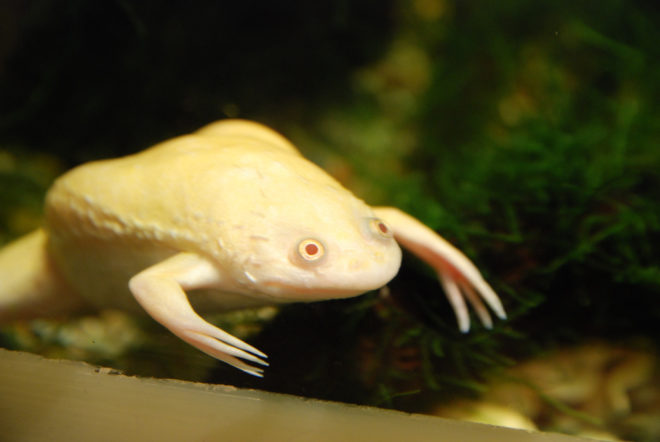Residing in just a small region near Mexico City, Mexico, is a salamander species known as the Axolotls. While the species is far from a traditional pet, they make a good choice since the care routine they require is easy. They are even adept at living in a landless aquarium. Most stunningly, they can regenerate their limbs, something that has made them common animals to be studied for tissue growth studies across many laboratories.
Unfortunately, axolotls are critically endangered in the wild. Their habitat is disappearing quickly, and pollution is adversely affecting what remains. However, due to their popularity in being bred as pets, they are still thriving in existence. As many as 20 varying types of axolotls are estimated to be kept as pets presently. The breeding has spawned a series of morphs, many of them rare and, therefore, highly sought after. There are about 15 very popular morphs. To learn more about them, read on.
Axolotls Types
The axolotls is a Mexican species of salamander, that interestingly is the only species without a subspecies type. Most people are surprised to find this out since the presence of more than 20 different colorations makes it seem like there are quite a few more than just one species of the creature. Their price point is therefore dependent largely upon their coloration. They can be purchased from anywhere between $40 and $1,500.
To understand why axolotls come in different colors, it is important to grasp a bit about genetics, cells, and genes. The axolotl has three “chromatophores” or pigment cell types, each producing a different color. Their color is inherited from two genes, one from each parent. Each of the genes is equipped with three chromatophore types, aligned in three sections called alleles. The allele combination will influence how high or low the level of each chromatophore type is generated in the axolotl’s skin. This is the driving factor of what the new axolotl will ultimately look like.
Albino axolotls, for instance, have a very low level of melanophores, which produced blackish-brown pigmentation in their skin, resulting in them looking white, while black axolotls have a high melanophore count, driving the opposite effect of their appearance. If the axolotl inherits two of the same alleles from both parents, it may also develop color patterns.
When an axolotl is an offspring of a parent with a normal allele and an albino, it will not be an albino. In order to become an albino axolotl, the creature must have two albino parents. Therefore, breeding a specific axolotl breed is quite a tricky process, resulting in the extreme rarity of certain morph types.
Many morphs get their coloration from a mutation occurring in normal alleles. Much like in snakes, like the Ball Python, morphs result in unusual skin patterns. In order to breed a particular morph type, a significant amount of patience and careful breeding is required. As the breeding grows in popularity, additional morphs are continuously being discovered.
The Best 15 Colors On Axolotls
1. Leucistic
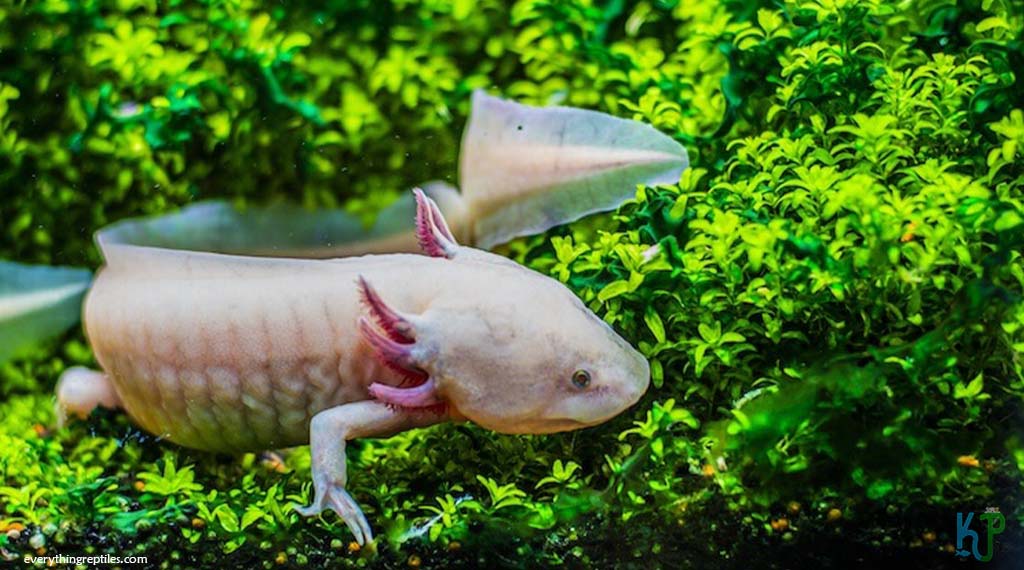
The Leucistic axolotls appear to be translucent white, covered with gold flecks. They have black or dark brown eyes, along with pink or red gills. Their appearance makes them easy for predators to spot, endangering their existence more than most other axolotls on this list. The hardship of their survival makes them very rare in the wild, but in captivity, they are some of the most beautiful and common morphs.
While they look similar to albinos, they are not quite the same, particularly because albinos have red eyes. A mutation that produces lower melanocyte levels in their skin causes their Leucism. Without sufficient melanin (dark pigmentation) that is produced by melanocytes, these axolotls do not possess the same patterns as their wild counterparts.
2. Golden Albino
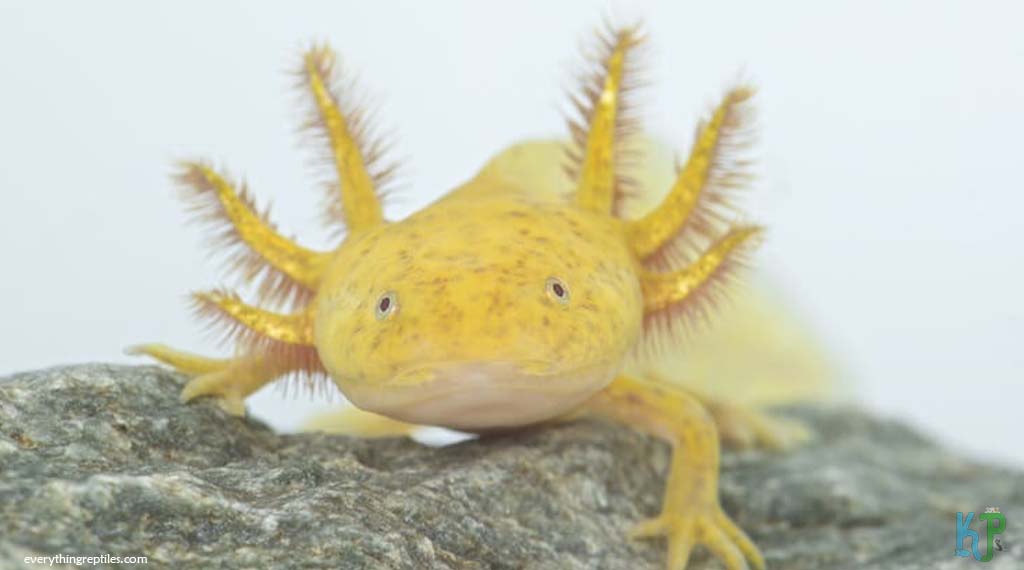
The Golden albino axolotl spans an array of color hues from almost entirely white to yellow, peach, and orange-gold, with bodies covered in species and reflective spots. Their eyes can be pink, white, and yellow, with gills of a lighter-yellow tint of peach. While they are in their adolescent stage, they are almost indistinguishable from white albinos, including the latter’s high sensitivity to bright lights, though as they age they take on an eye-appealing golden coloration.
Like nearly all other morphs on this list that are light in color, the golden albino axolotl does not have a significant melanophore count, but it does retain its xanthophores, which explains its yellowish-gold hue. Those individual axolotls that have high iridophore levels may even appear to be covered in a gold leaf.
3. Wild Type
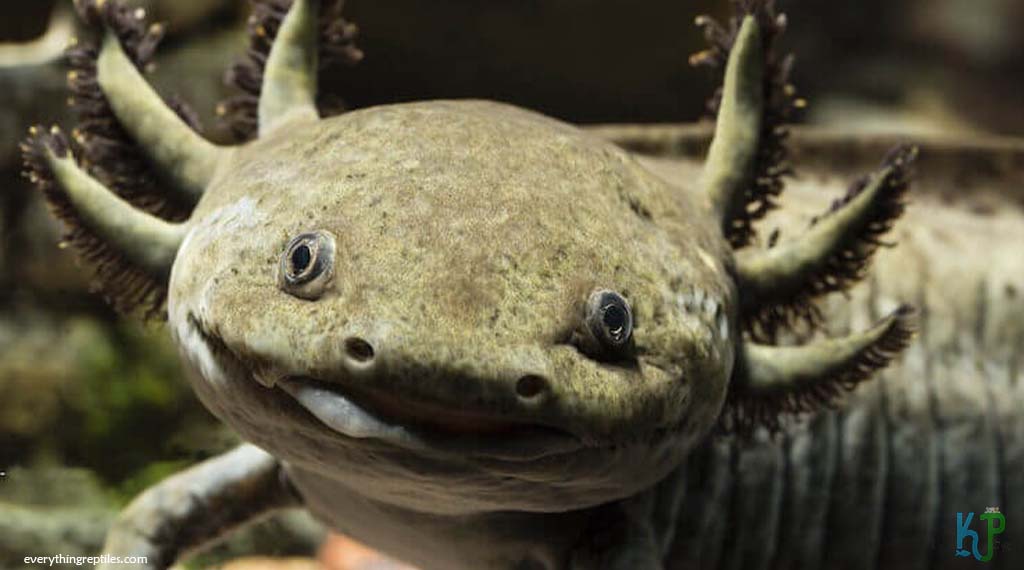
Wild-type axolotls have black and olive mottling on their dark gray and green skin, as well as golden speckles from their iridophores. All of the species of this type of axolotl found in the world have the same patterns and colors, down to their pale belly.
Of the known axolotls, this breed is the oldest known to be adopted as pets, with some of the first individuals taken from Europe in 1863. Their coloration depends on the individual, but it can range from being almost entirely black, to gray, and even a lighter shade of yellowish-green. The wild type morph has dark eyes inset with spectacular golden iris and purple gill filaments. Their coloration serves as a defense mechanism as they can hide from threats by blending into Mexico City’s muddy lakebeds.
4. Piebald
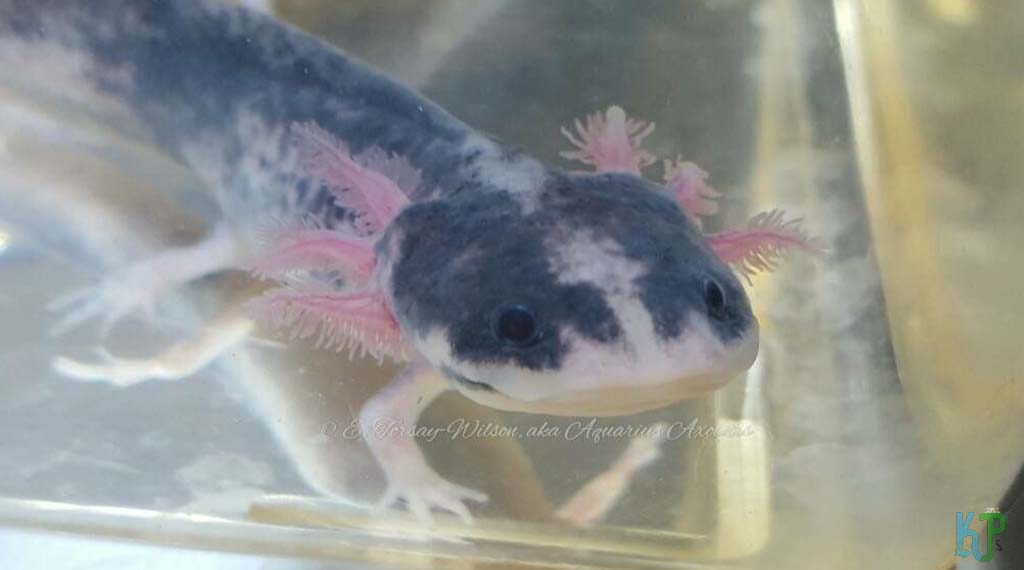
Piebald axolotls are interesting-looking morphs. Their skin is white, their eyes are black, their gills are red, and they port black, gray, or dark green symmetrical patches across their back and their face, sometimes extending down to their sides and their legs, though the latter is fairly rare, with the pattern mostly isolated to the top of their body. The pattern darkens the older the axolotl ages, resulting in a white and black colored salamander.
While heritable, the piebald gene is rare. In fact, most breeders that engage in producing piebald axolotls live in New Zealand. This breed is a leucistic morph, whose melanophore concentration is almost exclusively concentrated to their back and head, a result of neural crest cells that shift to the region during the animal’s early development in the egg.
5. Mosaic
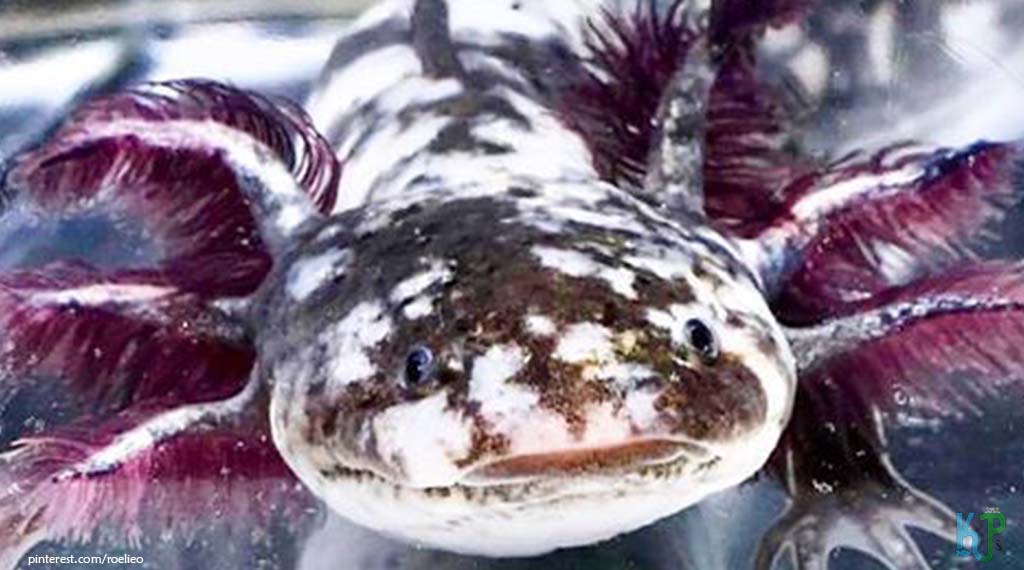
The Mosaic axolotls get their name due to the resemblance of their namesake, mottle with white, golden, and black flecks. They have multicolored eyes, as well as purple and red-shaded gills. These morphs are generally offspring of albino and melanistic parents. Even more, interestingly, they are generally a result of two fused eggs. In some cases, rather than being split down the middle, the colors attributed to each parent distribute and display randomly, resulting in colorful, unique, and beautiful mosaic-covered axolotls.
Unlike many of the other axolotls, the mosaics occur accidentally in nature, and cannot be bred. Due to their rarity, it is difficult to find them for sale, but occasionally buyers may run across one.
6. Copper
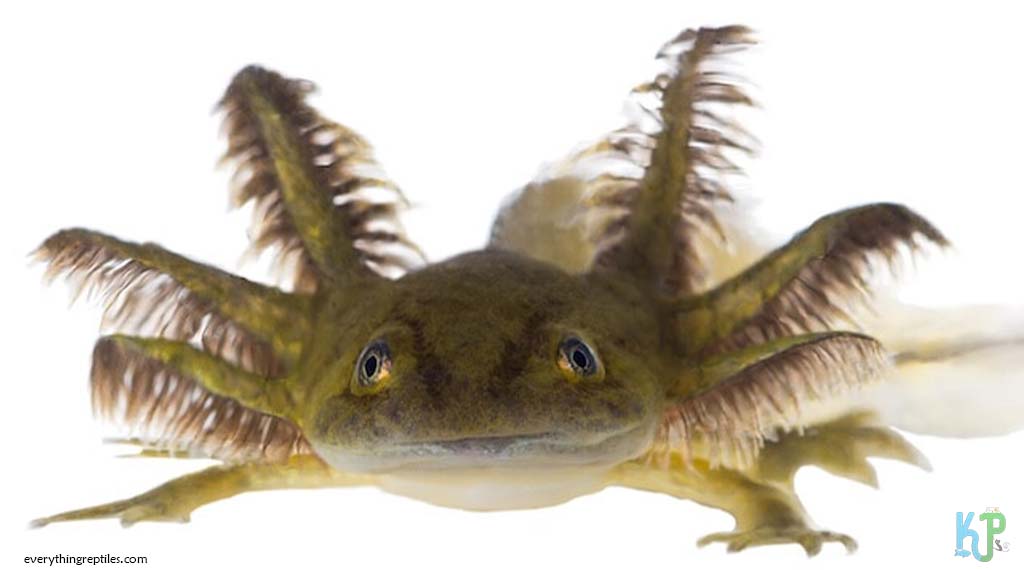
Copper axolotls have unique gray irises in their eyes and copper freckles with light gray bodies. Their gills are also of a grayish tint, though their belly is lighter. The coloration of the copper axolotl can range from almost pink to a caramel color. Their sandy hue and adorable, speckled faces make them a popular axolotl morph where they are sold, which is mainly in Australia and the US, but they are harder to find anywhere else.
The copper morph is an albino axolotl, but a much less extreme case of such. Their melanin and pteridine levels are low, but not absent. When coppers are bred with other morphs, they produce specific varieties, including axanthic copper and melanoid.
7. Lavender
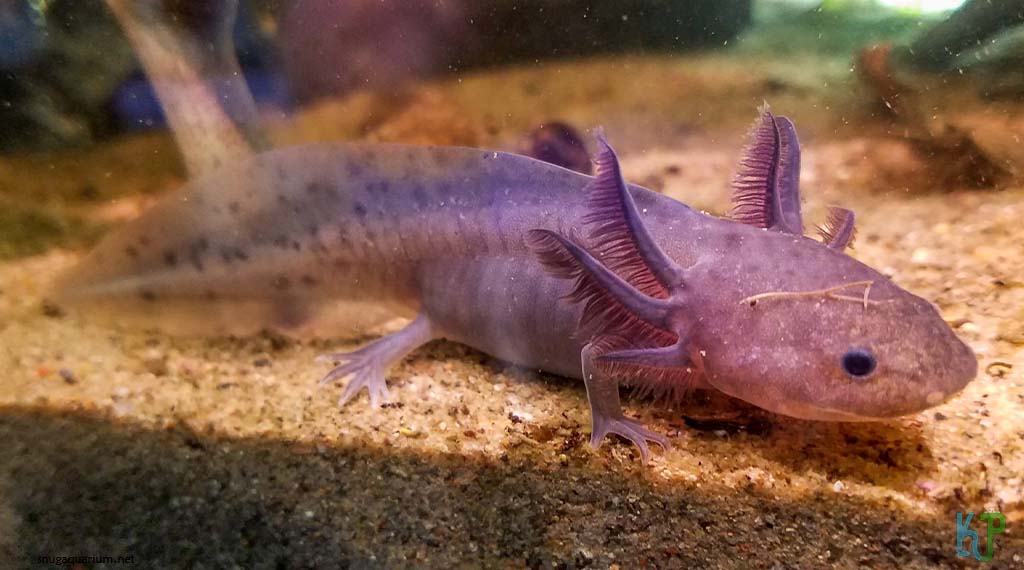
The gray-spot-covered Lavender axolotl has black eyes, and grayish-red gills, and is of a light hue of purple, covered in gray spots. They resemble salamander dalmatians. Most of these morphs remain purple for their entire lives, though a select few turn green or gray as they get older. When bred with melanoids, they produce hybrids that have no spots and darker purple skin, though these are quite rare.
It is very challenging to find lavender morphs as they have only been bred a handful of times, and when they are, they have only been found in the United States. Their rarity and their polka-dotted purpose coloration make them pleasing to the eyes and very desirable.
8. Black Melanoid
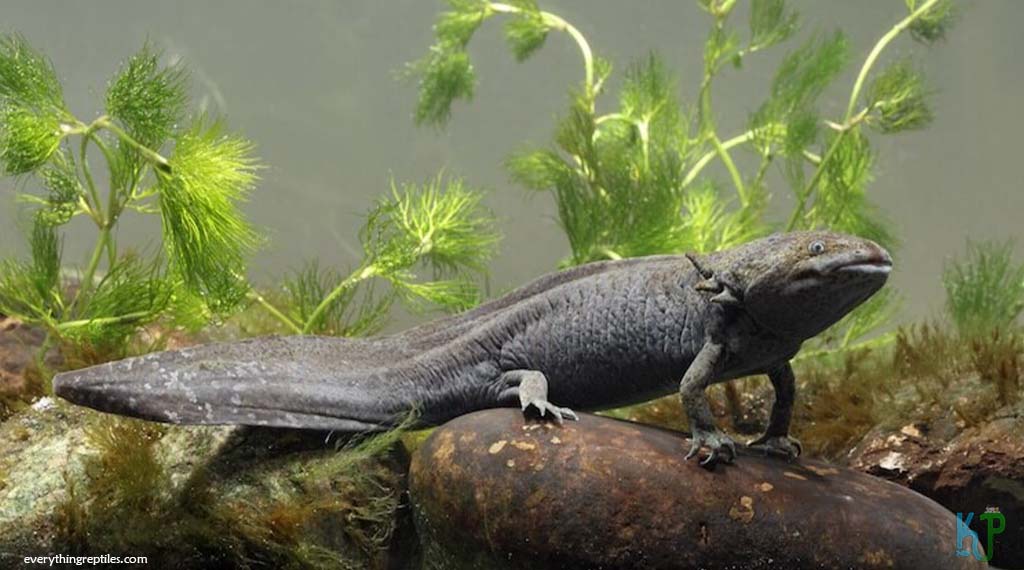
First identified in 1961 in a laboratory, the Black Melanoid is formed from a recessive mutation. Melanoid have fewer iridophores and much higher melanophore levels, making them the polar opposite of the albino morphs. They can be entirely black in color with purple gills, though they also occasionally appear dark green. Some resemble wild-type axolotls but lack their shiny golden irises.
Black Melanoids can change their colors as well, though their color tone ability depends on their substrate or surroundings. Still, the color change will not be permanent. A dark substrate results in a dark salamander, while a light one will cause the axolotl to lighten.
9. White Albino
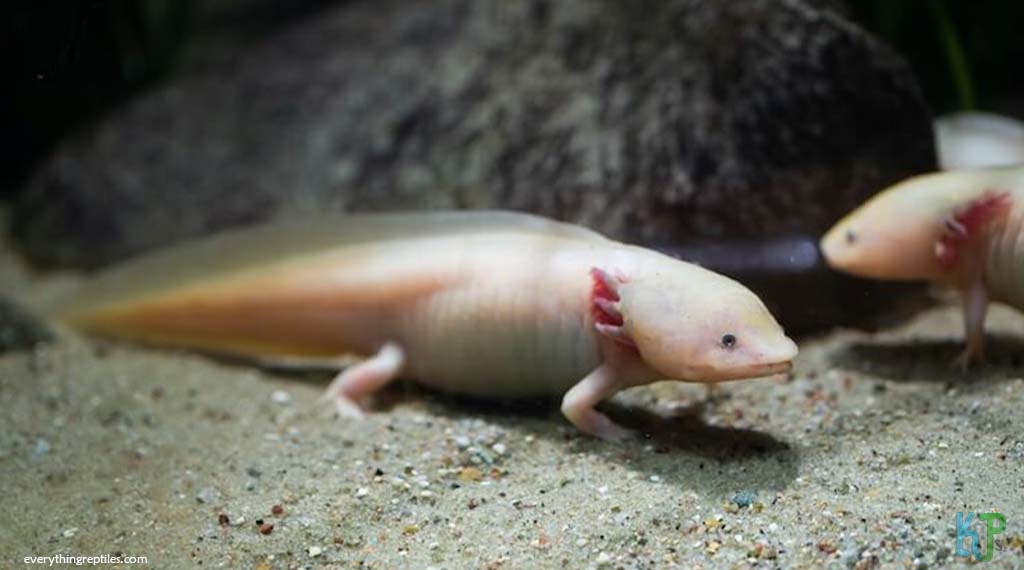
These axolotl morphs are entirely and purely white, with red filaments, golden flecks on the stalks of their gills, and either white or pink eyes. Young albino morphs are nearly see-through, particularly on their underside. As they age, the iridophores give their gills a deeper red coloration.
The species entirely lacks melanophores and xanthophores, and while they have iridophores, those are almost exclusively confined to their gills. The albino is a type of leucistic axolotl, but without pigmentation in their eyes, resulting in poorer vision and higher sensitivity to light.
10. Speckled Leucistic
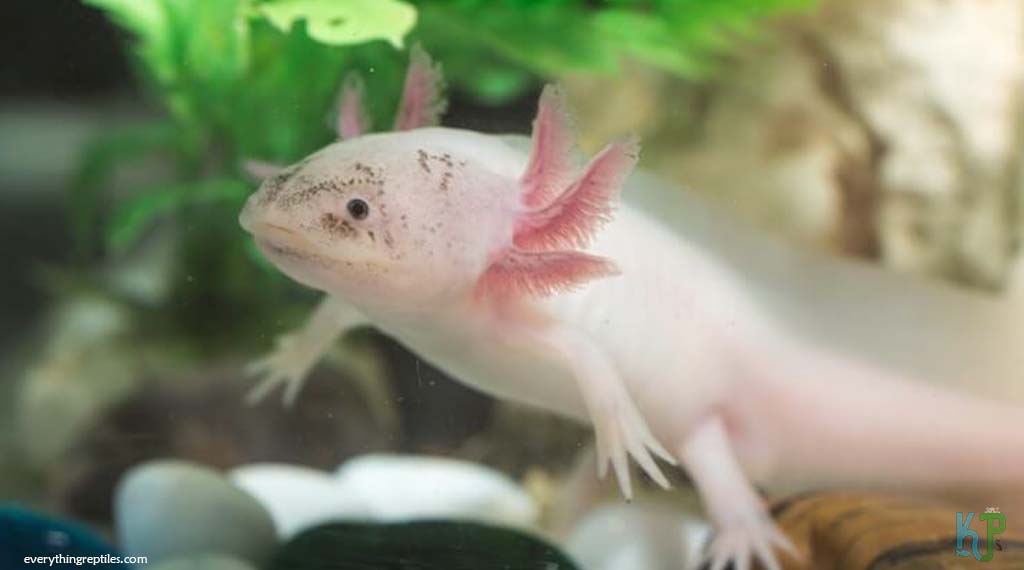
Another example of a leucistic mutation is the Speckled Leucistic axolotls which are covered on their head, back, and tails with dark green, brown, or black speckles. Like typical Leucistics, they are white at the base color, but the speckling is less extreme than a mosaic or piebald morph. When they are young, these axolotls look like standard Leucistic, developing speckling later in life. As their pigment cells mature, their freckle pattern and coloration begin to change as well.
11. Chimera
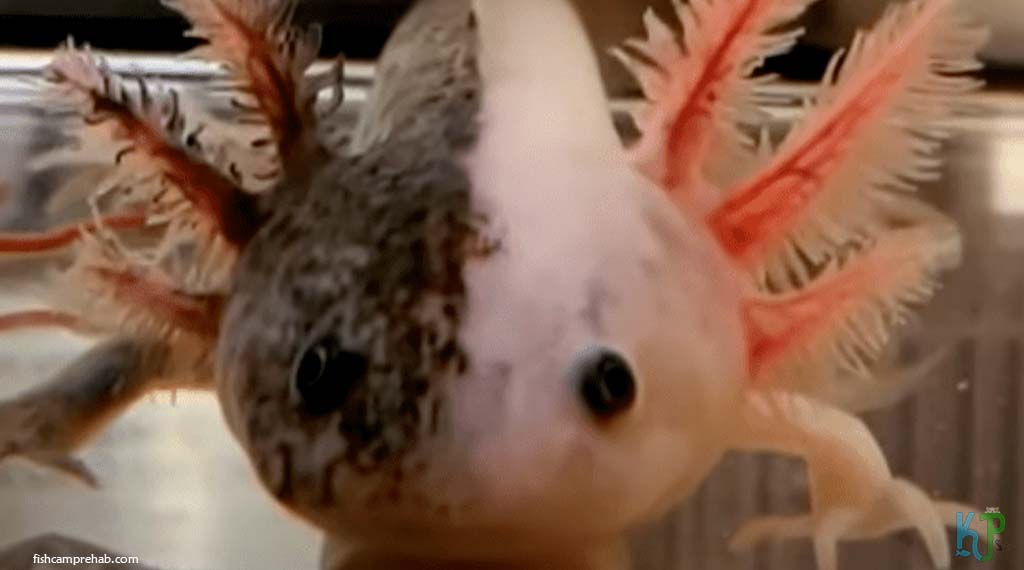
So rare is the Chimera, that the scientific community cannot formally decide if it is a true morph. This strange creature looks like one morph on one side, and another on the opposite side. It is quite literally split in half down the middle. Some Chimeras are half wild type and half albino. Chimera axolotls occur in the rare case of two eggs fusing into one. The process is so tenuous, that the eggs often don’t hatch due to not being fused completely. Since these creatures are essentially a developmental anomaly, they cannot be bred selectively.
12. Heavily-Marked Melanoid
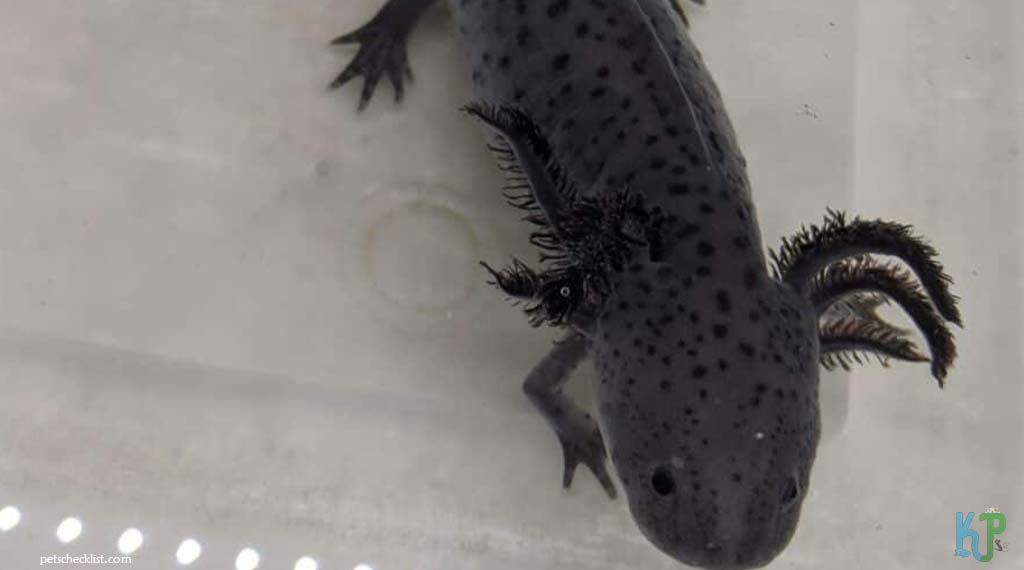
A unique morph variation of the black melanoid is the Heavily-Marked melanoid. While they have similar black and purple-greyish spots to the standard malanoids, they also possess yellow and green patches. These creatures have seldom been seen, so very little is known about them. The reason for their scarcity is that it would take a very specific situation in which two melanoid parents produce an offspring that is heavily marked.
13. Green Fluorescent Protein
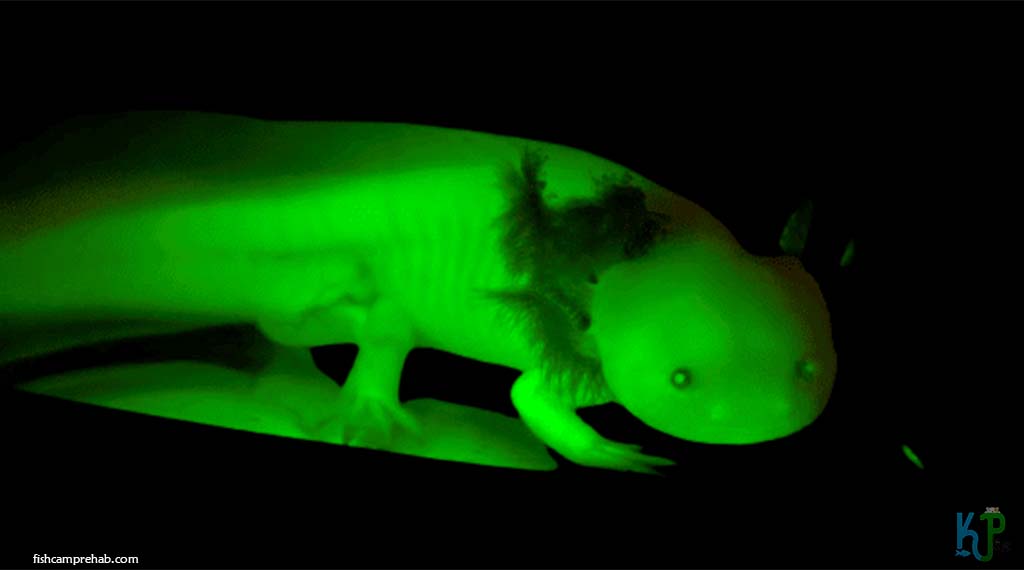
The Green Fluorescent Protein axolotls may resemble any other morph, but under UV lighting, they emit a bright fluorescent green glow. Though not visible without it, there is no mistaking it under UV rays. The more UV lighting is applied, the brighter the skin glows. The gene that allows this actually comes from jellyfish but was artificially introduced into axolotls during a 2005 study of cellular movement and cancer at the Max Planck Institute.
14. Firefly
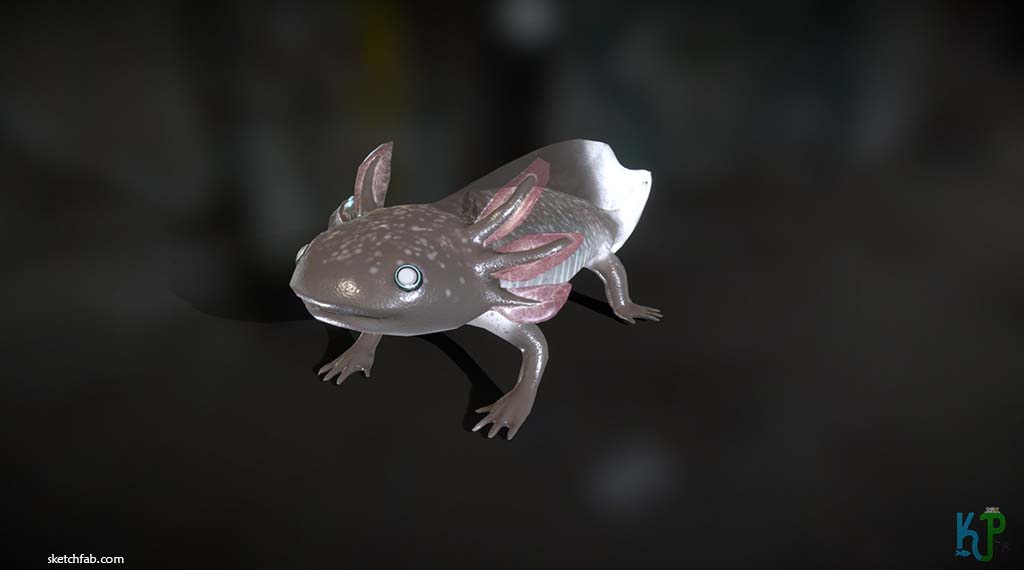
Another artificially created morph, this one developed by Lloyd Stohl, is the Firefly axolotl. It came to be through an experiment in embryonic graphing, originally studied to understand limb regeneration. Needless to say, it is a controversial method of creating pets. Since the Firefly trait was lab-created, it is immensely rare. The creatures are wild-type axolotls that also possess the green fluorescent protein gene, but solely in their albino tails. Like the Green Fluorescent Protein axolotls, they will also glow in UV lighting, but only their tail, thereby garnering the monicker of Firefly.
15. Enigma
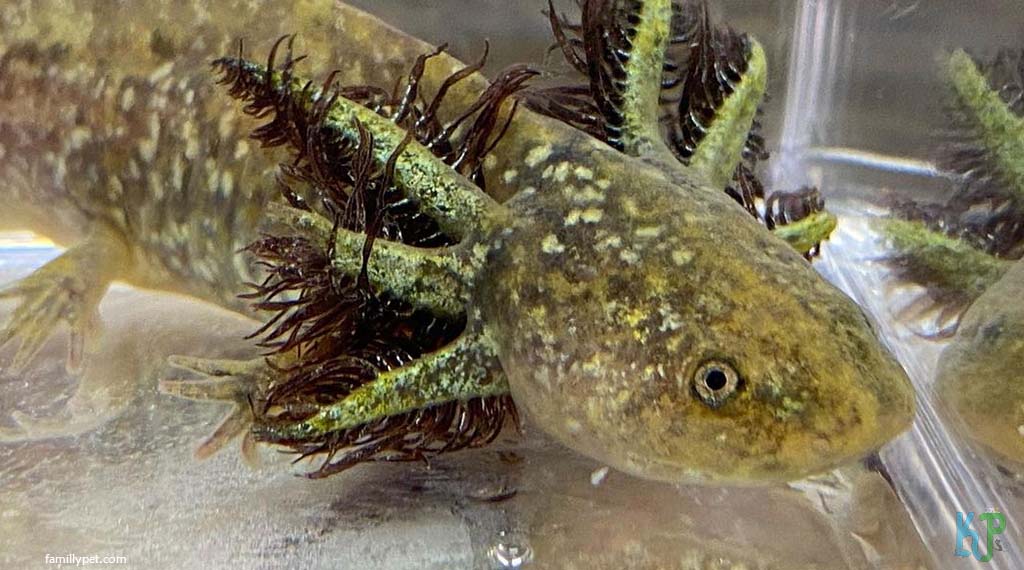
Finally, there is the Enigma morph. It has a white belly, golden eyes, pale red gills, and a dark gray body, covered in golden shiny patches which appear green from particular viewpoints. This axolotl breed was discovered initially by a US breeder and soon determined to be a wild-type axolotl with a high iridophore level. This is the rarest of all axolotls morphs, with very little known about him. Yes, him, as there is only one known creature of this type in existence.
Conclusion:
In conclusion, axolotls are fascinating species that come in various morphs, each with its unique coloration. From wild-type to leucistic and from melanoid to albino, the range of colors and patterns that axolotls can display is truly stunning. If you’re interested in learning more about keeping exotic pets, check out our next article on caring for albino African-clawed frogs. This will give you a deeper understanding of what it takes to keep these fascinating creatures healthy and happy in captivity.
Frequently asked questions:
Can morphed axolotls breed?
Yes, axolotls that have been morphologically altered can still breed. However, their offspring may not have the same morphological traits as their parents. It is also important to note that breeding animals that have been genetically altered could have negative effects on the population and should be done with caution.
Why do axolotls morph?
Axolotls, a type of salamander, morph in order to survive in their natural habitat. They are able to regenerate lost body parts, such as limbs, and maintain a permanently aquatic lifestyle. This ability is due to their retention of certain genes involved in development and regeneration that are lost in other salamander species.
Can axolotls morph?
Yes, axolotls can morph. They are known for their ability to change their coloration and patterning depending on the environment and genetic factors. Different morphs like Wild-type, Leucistic, Melanoid, and Albino are some of the varieties of Axolotls with different colors and patterns.



